WSP tracks and manages critical Jerusalem Light Rail projects with a digital construction platform

WSP Global is a world leading Engineering and Professional Services firm, with the goal of supporting communities in planning, designing, managing and engineering complex projects across verticals such as transportation and infrastructure, property, earth and environment, and more.
The company is using DatuBIM, a cloud-based constrction data analytics and management platform, to monitor the progress and quality of an extension of the existing red line of the Jerusalem Light Rail.
Main benefits
Time savings
Enhanced visibility and quality control
Improved collaboration
Introduction
WSP Global is a world leading Engineering and Professional Services firm, with the goal of supporting communities in planning, designing, managing and engineering complex projects across verticals such as transportation and infrastructure, property, earth and environment, and more.
As part of a Public Private Partnership (PPP) project to extend the existing red line of the Jerusalem Light Rail, WSP Global’s local subsidiary, WSP Israel, was hired as the monitoring company by the state. There are many stakeholders involved in this long-term project, which is headed up by the Accountant General of the Ministry of Finance
WSP is an integral part of the operation, with a wide role that includes reviewing the designs, monitoring quality and progress on behalf of the State, and ensuring the project is completed to specification. They are on hand to consult on special cases or challenges using their wide experience and expert knowledge.
Based on the prototype of this project, additional transportation projects in Israel will be monitored using a digital platform, both in Jerusalem and Tel Aviv.
WSP needed a solution that could solve discrepancies between stakeholders
From the start, WSP realized that this project required a new way of thinking. “In many ways, the Light Rail project was unchartered territory” said Asaf Yaffe, Control Manager at WSP Israel. “It’s a long-term project over a wide area, and there are multiple stakeholders to consider and include. We have the project company, which is responsible for the build, project managers on the state side, the municipality, the Bursar’s offices of the State, many designers from every side. I could go on.”
WSP wanted a solution that could help solve or even prevent discrepancies between parties — a platform that would future-proof against clashes or claims by showing a consistent view of what was happening on the ground. “We also wanted something to help us cooperate with one another,” continued Asaf. “Many people sit in the office and they hardly go on site. We wanted to be able to bridge that gap.”
WSP approached Datumate with these goals in mind, with the requirement of documenting accurate imagery, and providing stakeholders in the field and in the office with a centralized place to store accurate information and collaborate.
Asaf Yaffe
Control Manager at WSP Israel
So much more than document storage: WSP adds intelligence and accuracy to work processes
After a successful pilot on a small but complex project over a period of 8-9 weeks, WSP realized that there was a lot more value from a digital construction platformDigital construction platforms are used to streamline and optimize construction processes using digital technology. They… More than originally thought. “During the trial, we were able to pass information to the project company and fix things on the go, even in a condensed city full of traffic” said Asaf. “For example, we could see where construction activities were still required and where poles and utilities were being impacted, and send exact pictures and coordinates so that teams knew what to fix in granular detail. It made a huge difference.”
After a year of using DatuBIM, WSP now considers the tool to be integral to collaboration and control in the long-term Jerusalem Light Rail expansion project.
By using their design documentation and layering it on the drone imagery from regular flights, stakeholders can immediately see where there are discrepancies or issues to fix — before costly rework or errors occur. “We have four or five layers of design, and we can incorporate each and every one in a vertical structure and see how each is doing,” said Asaf. “As the imagery is updated continually, we can be certain of the accuracy — which is significant when you’re working on such a dynamic project.”
Flights are scheduled flexibly, with the frequency varying from once a week to once a month, depending on the circumstances and project needs.
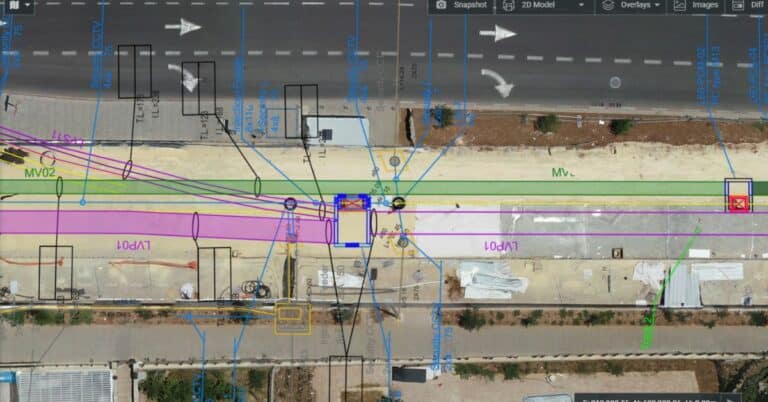
Customized reporting — WSP enjoys a collaborative process with a trusted partner
Throughout this project, Datumate has worked with WSP on boosting and augmenting its reporting capabilities. As well as out-of-the-box engineering reports, Datumate engages in a collaborative process with WSP to build customized reports related to specific challenges encountered in the field.
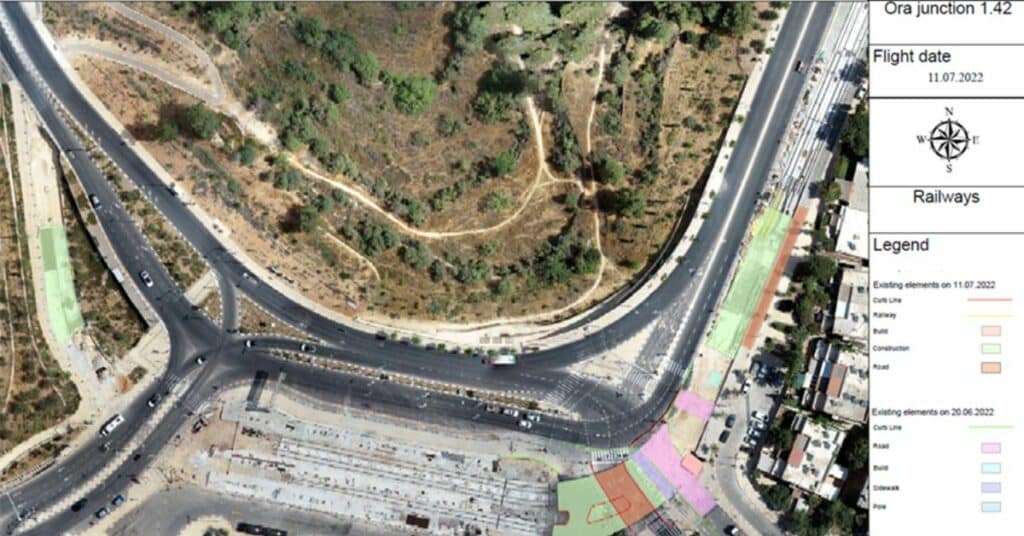
One example is a Change Detection report, which tracks contractor processes for specific materials, and highlights changes to these materials across successive flights.
Another example is a Cliff Screws Count report. This uses a 3D flight to detect all screws on a horizontal wall, using high resolution imagery.
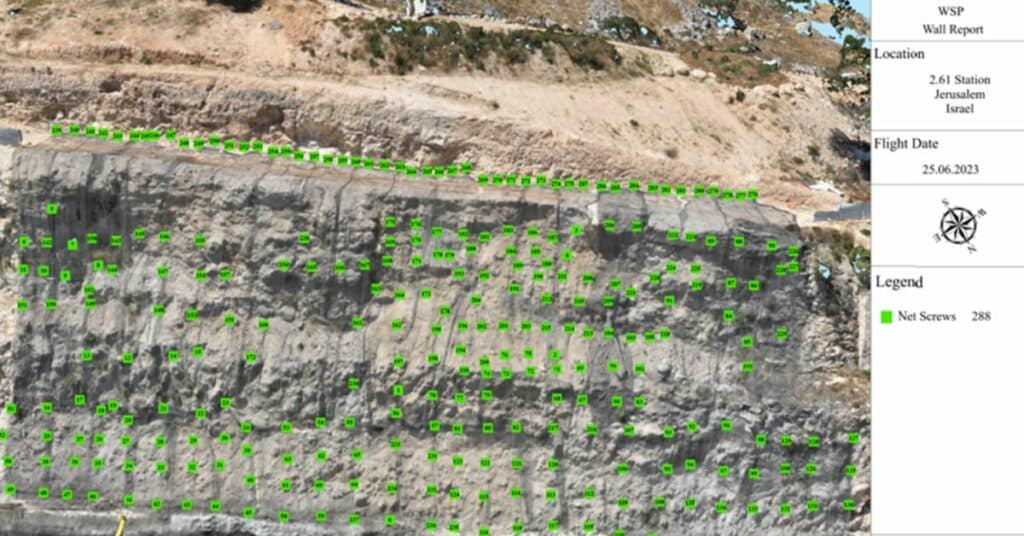
Similarly, in the reports below, the existence of Overhead Contact System poles is documented, and the existence of rail, both compared with the CAD design. In the second image, stakeholders can also see statistics related to how long the work took to execute.
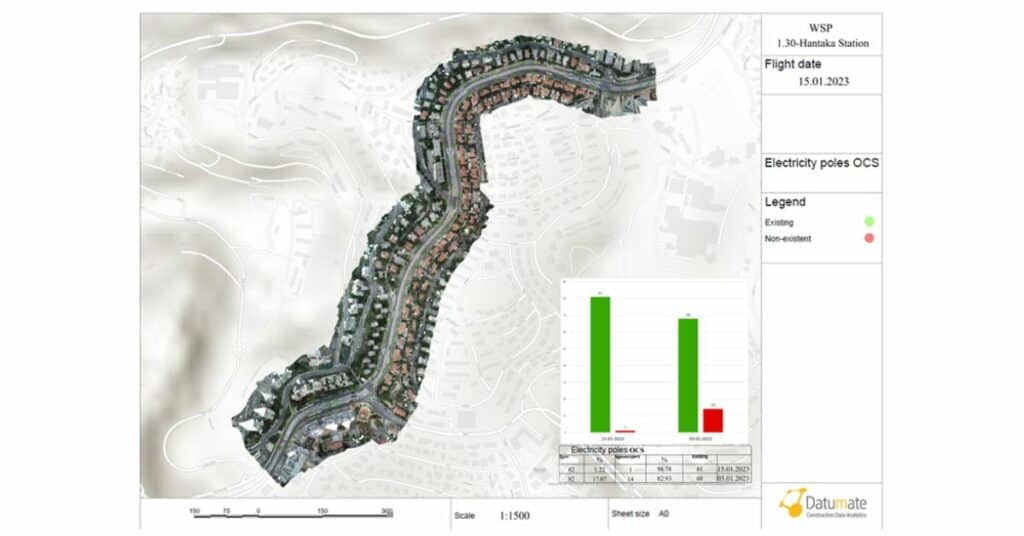
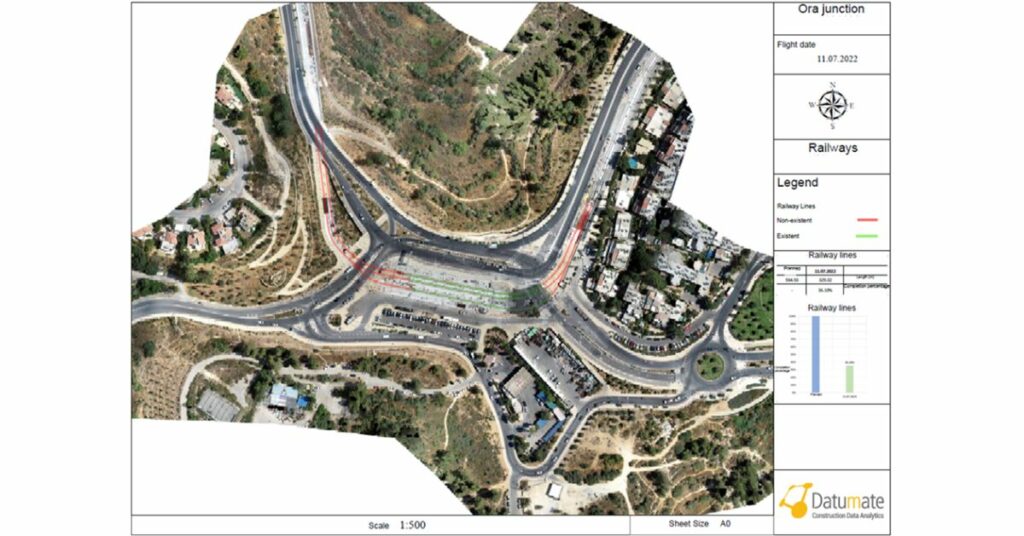
Finally, Datumate works with WSP on custom volume reports, where insights are given on the volume of material between flights, to support the team in accurately verifying contractor invoices.
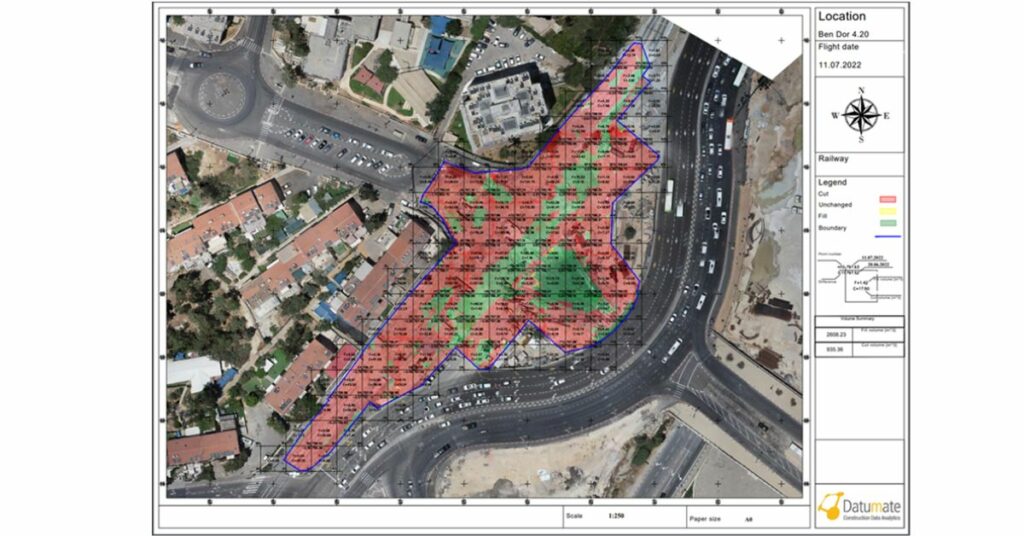
The benefits for WSP: accurate monitoring and robust quality control
More than 30 users are currently utilizing DatuBIM, many of whom are external stakeholders, such as all the project managers on the state side, and significant users from the government side. Being able to provide different levels of access, such as viewer access and admin access, means that WSP can function as the back office, and allow stakeholders on the ground to get on with their work, with that essential visibility in place.
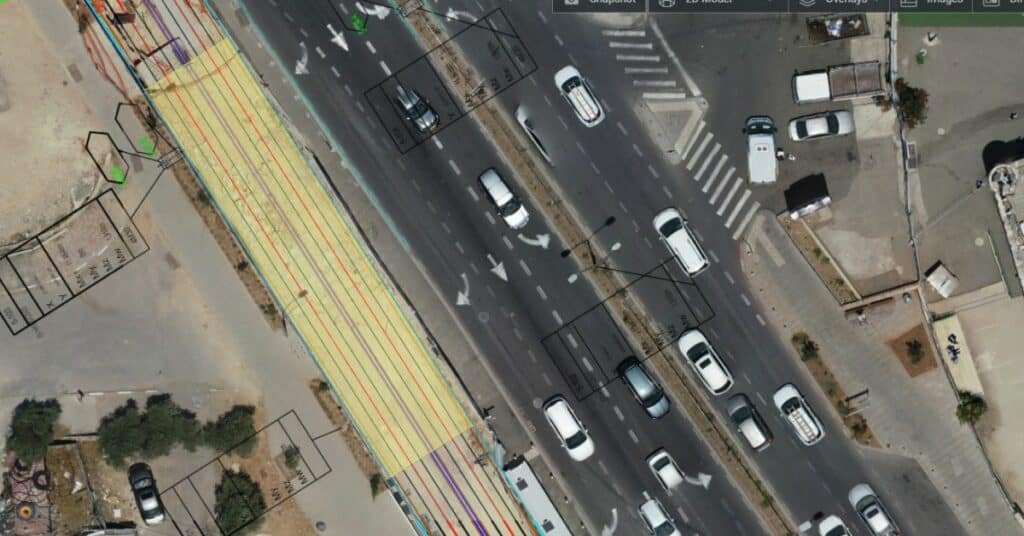
Additional benefits
Quality control
WSP, as well as other stakeholders, now logs on and looks at plans, and can see at a glance what’s happened up until now, compared with what should have happened. This makes quality control seamless.
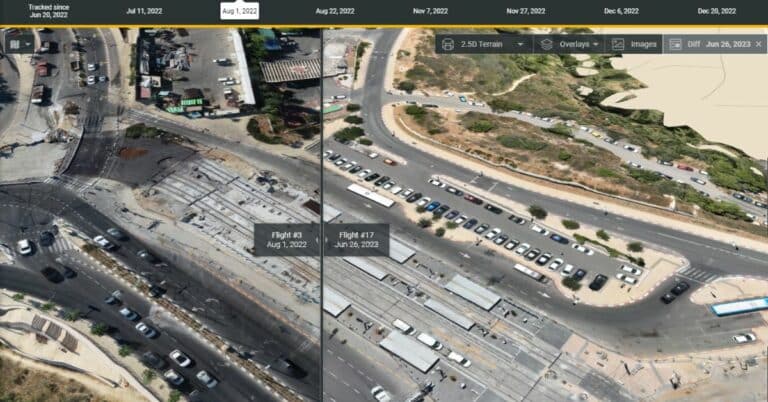
Full visibility
Anyone can see what’s happening onsite, even those in the office who would usually not have that vantage point. Stakeholders can see up-to-date reports, and visualize progress with ease.
Time savings
Historically, to take measurements, stakeholders would need to go onsite multiple times and manually complete the work. With DatuBIM, the process is automated.
Better collaboration
WSP uses the customized reports in team and status meetings, easily showing overlaps against design imagery for instant value.
Intuitive interface
Without hours of training, WSP can set stakeholders up with access to imagery and reporting, on a platform that is simple to use from day one.
Added value
- Accuracy and visibility into a complex transportation project of more than 30km
- Streamlined communication across multiple stakeholders
- Customized, professional reports built for purpose to meet unique challenges in the field
Next steps
WSP plans to increase the number of users, and to start using additional functionality in the DatuBIM platform. The next stage of the Light Rail project involves starting a new line from the ground up, and DatuBIM has been highlighted as a tool that could be used by designers to ensure accuracy at the earliest possible stages.